First Steps Taken to Create East Amherst Local Historic District
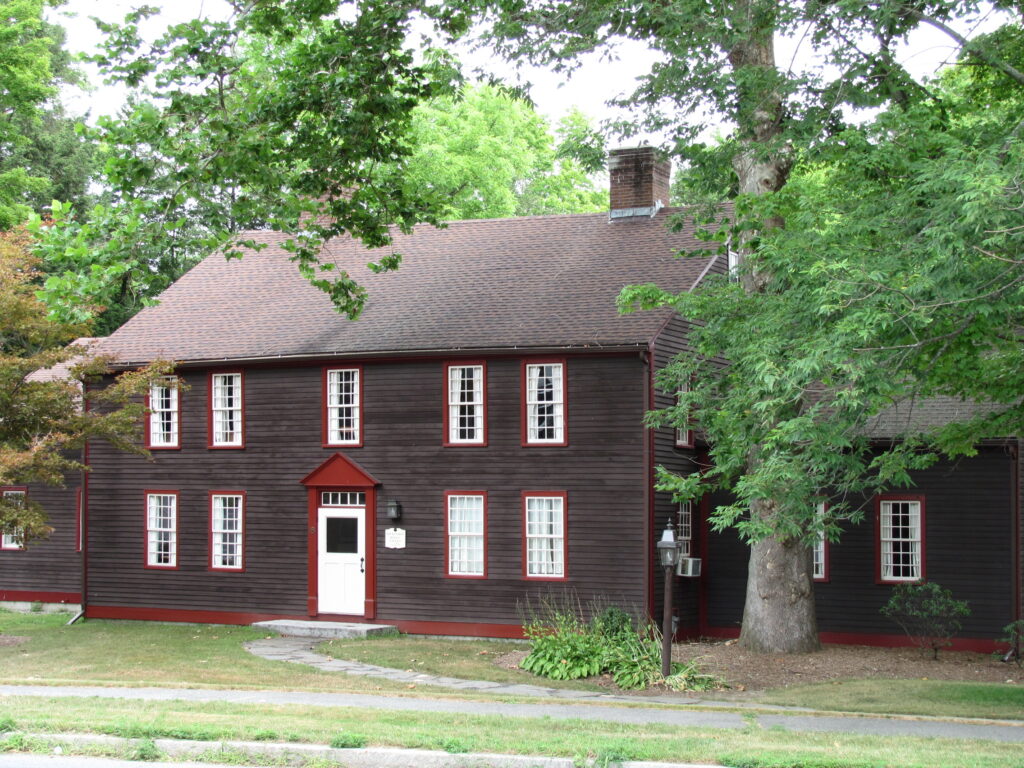
The Dickinson-Baggs Tavern is located in Amherst's East Village Historic District and is listed on the National Register of Historic Places. Photo: John Phelan /Wikipedia (Creative Commons)
Report on the Meeting of the Local Historic District Commission, July 17, 2025
This meeting was held over Zoom and was recorded.
Present
Nancy Ratner (Chair), Nicole Miller, Greta Wilcox, Steve Bloom, Bruce Coldham. Absent: Karin Winter and Elizabeth Sharpe. One vacancy on the commission.
Staff: Walker Powell (Planner)
Four members of the public were present in the Zoom audience.
The opening steps in the formation of the East Amherst Local Historic District began with a presentation by Architectural Historian Chris Skelly detailing the historic properties in the district that are worthy of preservation. (For photos of all of the historic properties listed in the report, look here). Local Historic District Commission (LHDC) member Steve Bloom said that Town Manager Bockelman has made this preservation project a high priority for the town because East Amherst was the earliest center of civic and mercantile Amherst and he considers the area threatened by inroads of development. Before the coming of the railroad in 1853, East Amherst was an “industrial hub” with both cottage industries and factories, containing the palatial homes of the factory owners and the humble abodes of their workers.
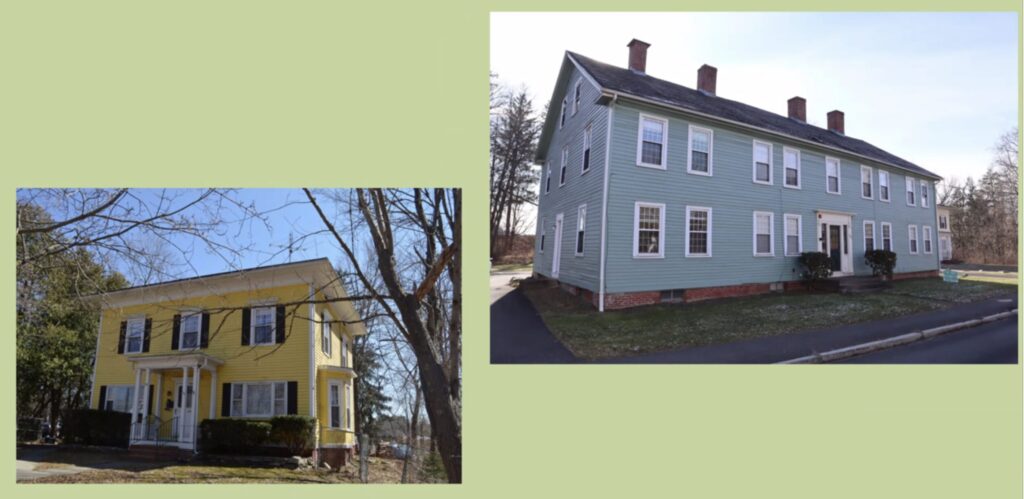
(R) Worker housing at Smith House East, 797 Main Street. Photos: amherstma.gov
Community Preservation Act funds enabled Skelly to be hired as a consultant to document the 50 contributing structures of the historic district. He was the former Director of Local Government Programs for the Massachusetts Historical Commission and has worked with communities across the state to preserve their historical resources. His web page states, “I want to find ways that our historic buildings and environments can grow, adapt, be economically viable, a model of environmental sustainability, and, overall, wonderful places to live and work.”
To allay fears that property owners will lose ability to modify their buildings, he stressed that preservation only protects those portions of a structure that are visible from the public way. In no way is it intended to stop development, he said, only that new construction be “appropriate” for its location. He cited the new house at 68 McClellan Street in the Sunset/Fearing local historic district as an example of appropriate development. The new apartment complex at Sunset and Fearing Streets is another example of new development consistent with the local historic district.
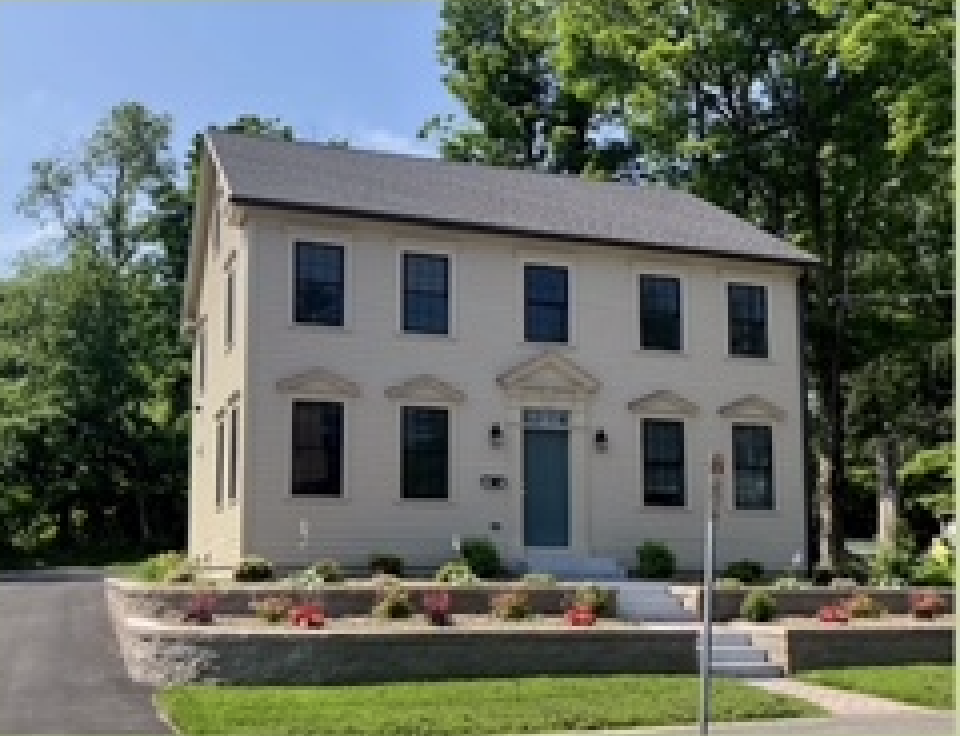
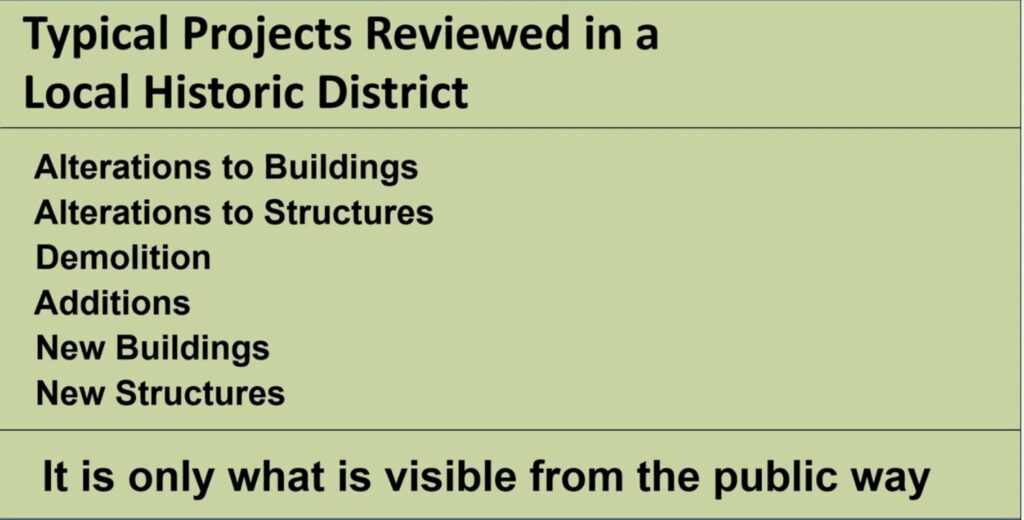
The East Village Historic District was added to the National Historic Registry in 1986. But this designation by the National Park Service is merely an honorific one that provides little protection to the structures within it. In his study, Skelly updated the 50-year-old data and provided more information and better maps and photos for a slightly larger Local Historic District. He started by investigating ownership in the old deeds, nineteenth-century maps, and town directories, which provided names and streets, similar to later phone books. Street numbers also came later. Jones Library Special Collections and newspapers were excellent sources of information.
The significant structures included the Second Congregational Church. formed by patriots who broke off from the Tory First Church. It was first built on the East Amherst Common in 1783. Its members constructed the larger edifice on the north side of Main Street in 1839 that is the focal point of the proposed Local Historic District. That structure now houses the Jewish Community of Amherst. The Ithamar Conkey house (aka the Conkey-Stevens House) built in 1840 at 664 Main Street opposite Spaulding Street received its own national designation in 1979. While it was originally designed as a Greek Revival brick structure, a second owner enlarged it and added the Second Empire mansard roof in1868.
Other houses important both for their architecture and ownership history are the 1754 Noah Dickinson saltbox at 754 Main Street, the 1758 Daniel Kellogg House on North East Street, the 1737 Clapp Tavern (later the Baggs Tavern) at 6 South East Street on the southeast corner of the intersection of South East Street and Main Street, and the General Ebenezer Mattoon House (circa 1782) on the common at 58 South East Street. The Mattoon House was updated significantly to the then-popular Italianate style similar to those of the new merchant class houses further west on Main Street, High Street, and Gray Street areas. The federal-style Smith House East at 797 Main Street is an example of period workforce housing. The new district also contains an impressive collection of period brick houses dating from the 19th century.
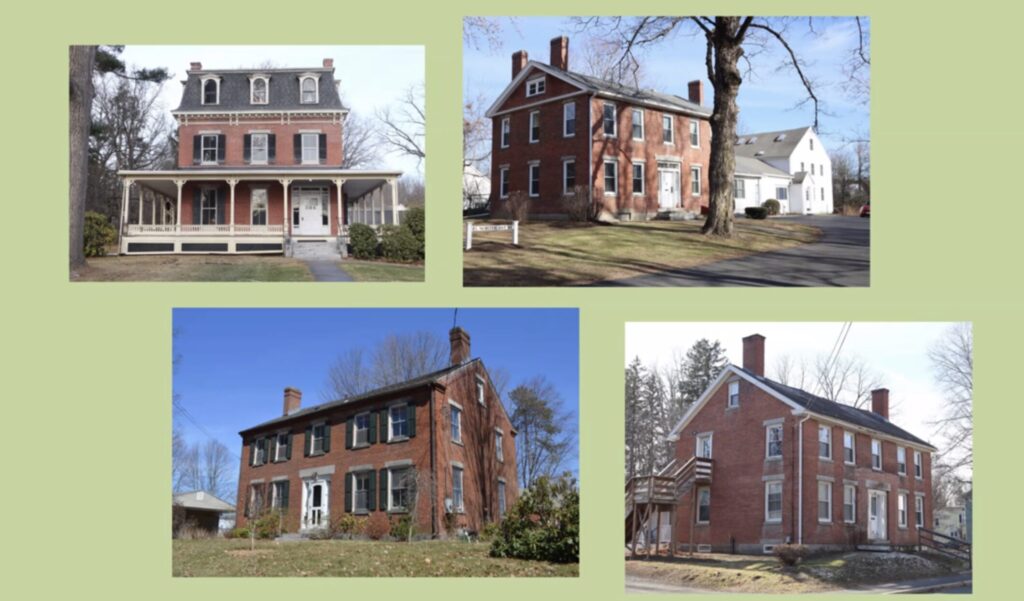
Ithamar Conkey-Stevens House (1840), 664 Main Street, H. Kellogg House (ca. 1840), 45 North East Street, James Kellogg House (1836), 807 Main Street, Rev. Charles Woodworth House (ca. 1850), 75 Northeast Street. Photos: amherstma.gov
The first phase of the process of establishing a local historic district involves the completion of this study report started by Skelly’s research. The completed report must then be reviewed by the Massachusetts Historical Commission (MHC), which plays an advisory role but is required by statute to accept the report. The Planning Board must also review the report. After the MHC deems the study complete, the town must wait at least 60 days before holding a public hearing. The plan for the local historic district must be approved by a two-thirds vote of the Town Council.
Bloom noted that the Sunset-Fearing local historic district was approved by Town Meeting in 2017 by a 172-19 vote. He noted that current Town Councilor Mandi Jo Hanneke voted against it and said that she and Town Councilor Pat DeAngelis have referred to historic preservation as “elitist.” (see here and here). He stressed that none of the LHDC members live in East Amherst, so that the formation of this local historic district was clearly not a NIMBY issue.
Staff liaison Walker Powell noted that a survey sent to property owners yielded few results, but that 45% approved of the creation of the local historic district, 45% were against it, and 10% had no opinion. However, she said that most of the property owners do not live in the district. Bloom said he would contact Senior Planner Nate Malloy who helped prepare the detailed report that led to the creation of the Lincoln-Sunset Local Historic District for assistance in creating similar documentation for East Amherst.
